On View
How Do You Make a VR Art Extravaganza? We Went Behind the Scenes to Find Out
Get a glimpse inside the world of VR and find out how much they cost to make.
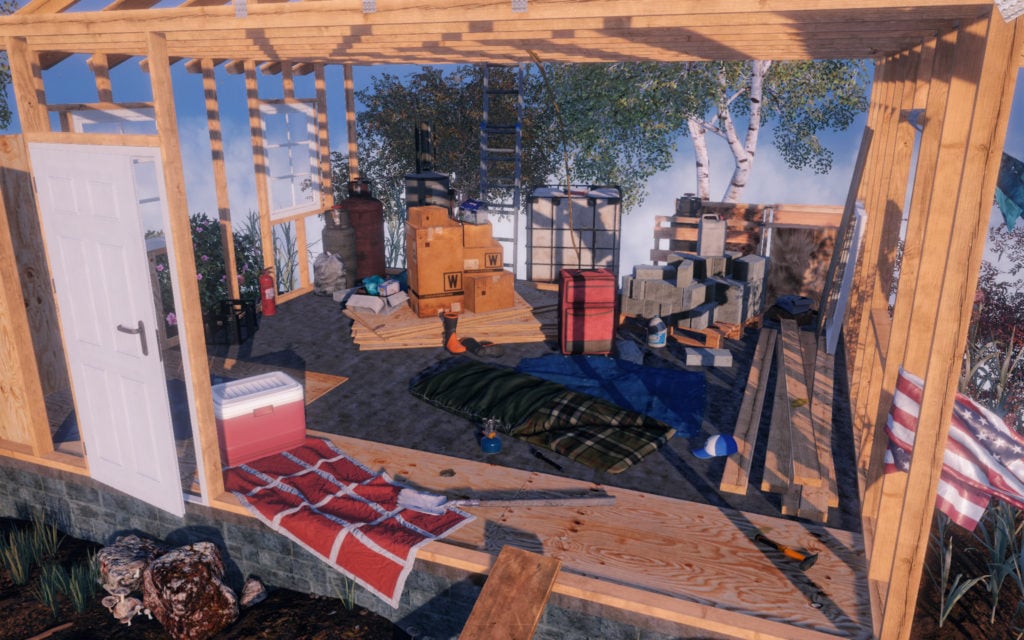
Get a glimpse inside the world of VR and find out how much they cost to make.

Brian Boucher

Will virtual reality (VR) technology gain a serious foothold in contemporary artistic production today? This is a question that seems to be at the forefront of the art conversation, as a generation of younger artists turn to VR as a medium that, in their minds, is equal to traditional ones.
Thinking hard about this is New York-based art collective DIS, which recently organized the controversial, forward-looking 9th Berlin Biennale in 2016. In a 2015 essay published by e-flux called “Styles and Customs of the 2020s,” the group sets out to make a series of dystopian and fanciful predictions for the future. Penned by DIS members and a welter of collaborators—including curators Chus Martinez and Hans Ulrich Obrist, and artists Timur Si-Qin and Andrew Norman Wilson—the satirical text describes a near future that involves “killer drones clad in Tuscan leather, driftwood, and yarn,” a Nutella-hoarding phenomenon due to the shortfall in cocoa-bean production, and, more dire, the privatization of all fresh water.
Styles and Customs then had a second life when the Carnegie Museum of Art in Pittsburgh, and its Hillman Photography Initiative, commissioned DIS and Scatter, a Brooklyn artist collective and design firm, to produce a work (also titled “Styles and Customs of 2020s”) based on a simple prompt: “How do new photographic technologies shape the virtual realm?” DIS and Scatter in turn invited artists Kim Laughton, Rachel Rossin, Jakob Kudsk Steensen, and Alan Warburton to create VR works for display in the museum’s capacious Hall of Architecture, which includes plaster casts of various historical architectural styles—a kind of low-tech virtual reality.
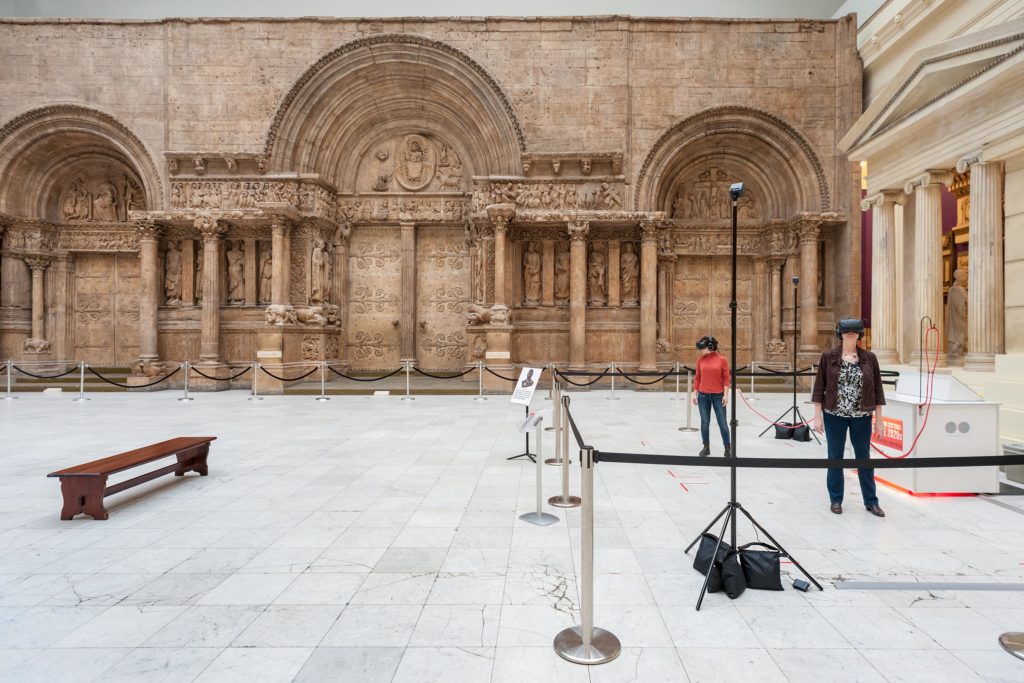
Installation of view of “Styles and Customs of the 2020s” at the Carnegie Museum of Art.
Scatter and the four artists started working on the project in January of this year for a March debut. DIS’s tongue-in-cheek fantasy futures took on a starkly different tone for the artists after the presidential inauguration of Donald Trump, when the future seemed even more bleak. Kim Laughton’s piece, for example, draws on a passage in “Styles and Customs” about “spacesteading,” where the super-wealthy flee the Earth to set up homes in space.
In Laughton’s piece, the viewer moves around a rock the size of a house floating in the sky. On the rock is a small shack under construction. A voice asks, “Do you think about the future? Of course you do! But it’s more complicated now, isn’t it? To have your head in this bubble? Can you indulge in the same escapism? Do you still worry about the same things? Does it feel different now—the future? Closer? More urgent?”
Conversely, Warburton’s piece places viewers in a digital version of the Hall of Architecture. Here the space is populated by mannequins holding up protest-style signs. Rossin, for her part, puts you in a stadium, where a pile of consumer goods explode as the viewer approaches them.
Artworks that use virtual reality are increasingly in the public eye. Just to name a few examples in New York alone, the current Whitney Biennial includes a disconcerting piece by Jordan Wolfson; this past March’s Moving Image art fair had a strong contingent of artists working in VR (and its relative, augmented reality or AR); and the Spring/Break fair, also in March, offered works by Erin Ko and the duo of Filip Kostic and Evan Hembacher.
The Carnegie Museum is far afield from artnet News’s New York HQ, but the office of Scatter is just across the East River, in Brooklyn. Relative newcomers to VR, we headed to Scatter’s office to take in the artworks and learn how they’re made, to get our own view of what the future has in store for the art world.
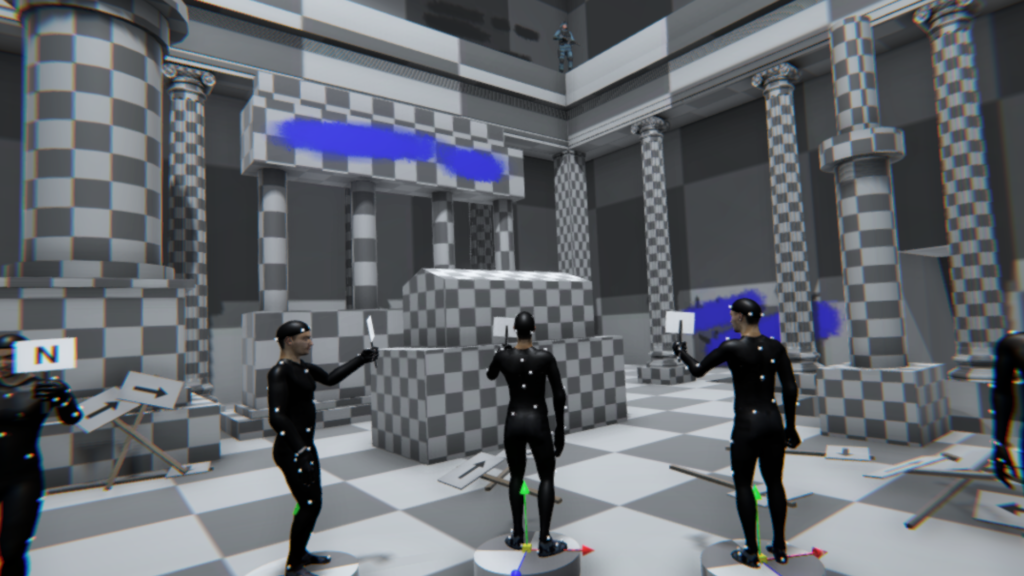
Alan Warburton’s contribution to “Styles and Customs of the 2020s.” Image courtesy the Carnegie Museum of Art.
Embarking Into the Virtual Space—in Brooklyn
Co-founders Alexander Porter and Mei-Ling Wong greeted us and showed off some of the artists’ contributions to “Styles and Customs of the 2020s.” The experience starts with the viewer in a dark cave lit by flickering firelight. Scatter designed the virtual environment by drawing from thousands of cave photos taken by French rock climber Silvain Yart. In the space, the viewer hears a voice-over reading the respective prompts that each artist responded to. Artist Jakob Kudsk Steensen reads: “Wars for water on water are waged… The drought in California becomes so extreme that the state’s wealthiest citizens fee, leaving the working and poor behind in a bone-dry state to fight over drops of water… Climate change becomes an even bigger and sadder topic.”
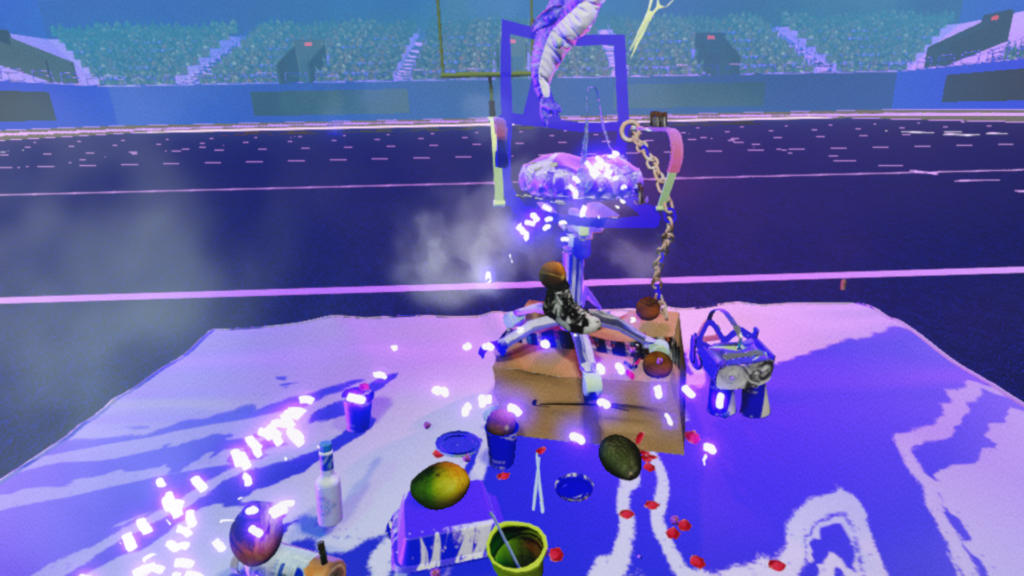
Rachel Rossin’s contribution to “Styles and Customs of the 2020s.” Image courtesy the Carnegie Museum of Art.
The cave then dissolves, and, in the case of Steensen’s work, viewers find themselves in an arid environment: under a bio-dome in a California desert. While the landscape is barren except for a few palm trees, a small screen rests on the ground, showing a video of a horse munching on grass—seemingly the only living creature in the landscape. A blighted tree holds the California state flag emblazoned with a roaming bear.
Entering the Matrix
How did Steensen cook up this environment? It all starts with the hardware, including a high-powered, fast computer. Steensen’s piece ran him $3,000. He notes that the basic components of VR have come down in price enough that if you want to create your own VR artwork, you can be up and running for just a couple thousand dollars. You can find an Oculus Rift headset for just $500 at Best Buy; the other highly popular headset is the HTC Vive, which will run you just a couple hundred more at GameStop. Headsets rely on small, high-resolution screens developed by cell-phone manufacturers, Porter said, which combined with wide-angle lenses, one for each eye, let you focus on the screen.
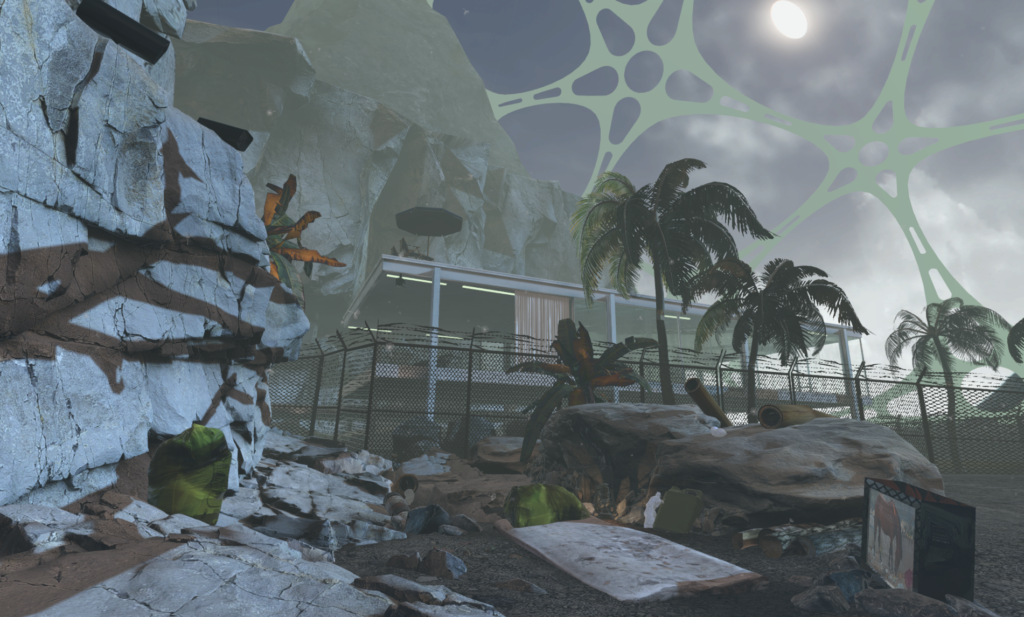
Jakob Kudsk Steensen’s contribution to “Styles and Customs of the 2020s.” Image courtesy the Carnegie Museum of Art.
As for software, all four artists constructed their environments with a program called Unity, which is typically used to create games. It was selected mainly because it has the virtue of being fairly accessible as these things go, since not all the artists had ever worked in VR. All the artists got help from Unity programmer Elliot Mitchell, who Steensen was quick to credit for several tutorial videos. Newbies can also find countless tutorials on YouTube, he pointed out, that guide you through procedures like setting up lighting.
Users start with an XYZ space: a grid to establish a floor and a three-pronged cursor with horizontal and vertical x, y axes and z axis to determine depth.
Then come the many sub-programs that Steensen used to build his rocky plateau with flora and fauna. “I have a program called SpeedTree that allows me to create plants,” he said. “That’s all it does. I used that to create palm trees.” The 3D software ZBrush allowed Steensen to use handheld controllers, like those used to move around in video games, to physically sculpt rocks, for example. “It simulates traditional craft; you can use various tools, like a paintbrush or clay,” he said. Then came Substance Painter, which allows you to wrap a close-up photograph of a rock’s texture around a 3D model of a rock. Finally, 3DS Max was used to make the buildings.
You don’t have to construct your world from scratch, either. Because the worlds that people wish to build are so varied, and producing them so time-consuming, companies sell “asset packs,” Steensen explained, that include ready-made, widely used objects and textures (e.g. grass, metal, stone, etc.).
It’s not only the physical objects that create the environment, but also intangibles like light—is it natural or artificial? Where is the source? How intense is it? As for air quality, the artist can determine degrees of humidity or dryness, warmth or cold. While it’s easy for the viewer to take such factors for granted, they are key in creating a convincing environment—or one that doesn’t quite get there. “You know something is off even if you can’t put your finger on it,” said Wong. “For example, if you’re on a beach and you intuitively know that the light doesn’t behave that way on a beach.”
“Human beings are incredibly attuned to anything that’s off in their environment,” Porter said. “So in a way, everyone is already an expert and has the ability to be critical inside the game scene. So we have to think very carefully about these nuanced factors.”
Environments like Steensen’s make the grade, completing worlds so convincing that they made me feel, when I took off the headset and came back to reality, that the work accomplished one goal art of any medium can aspire to: making the familiar seem strange.